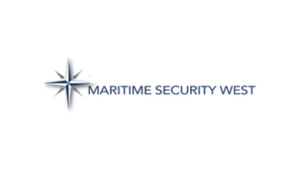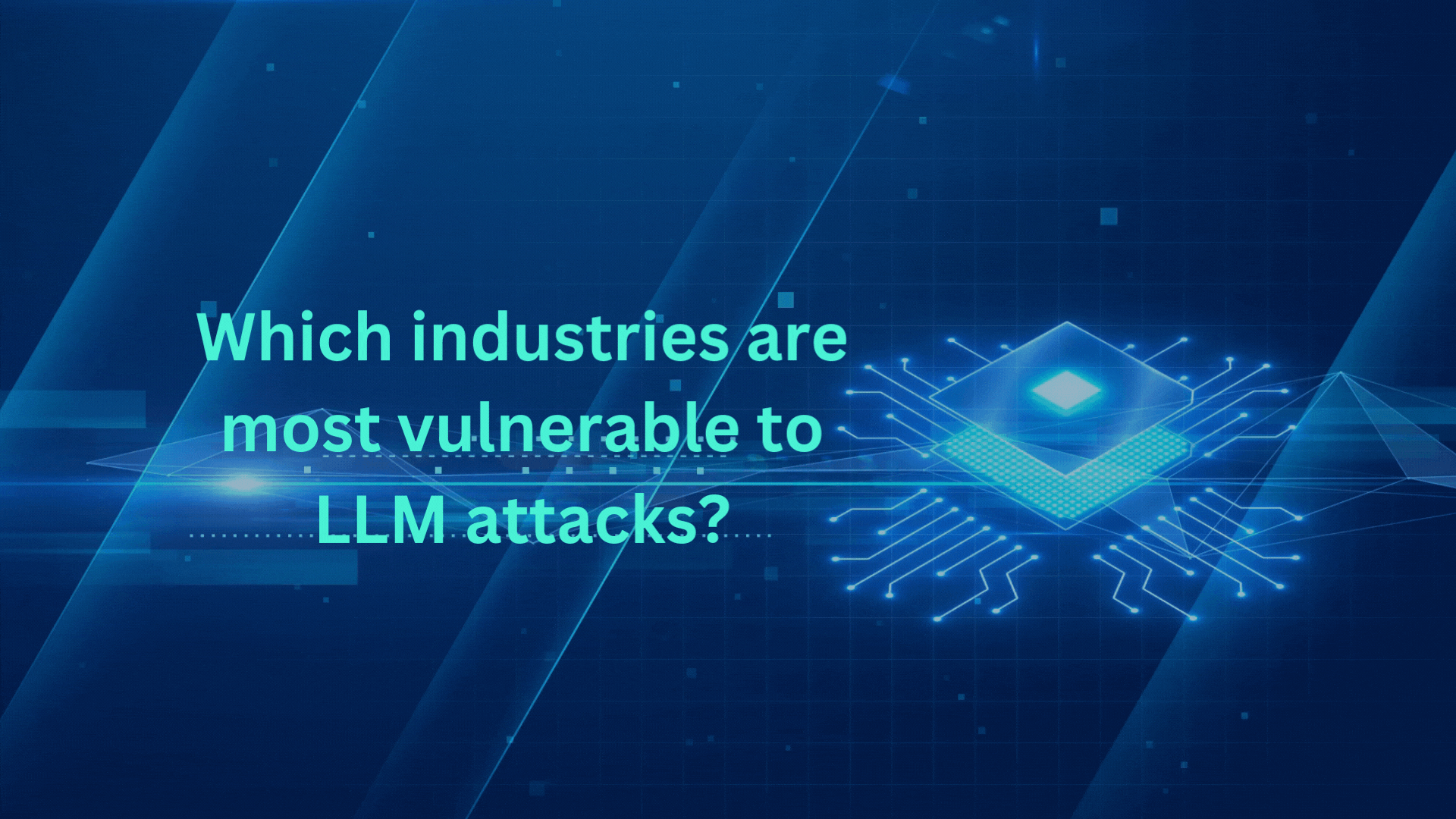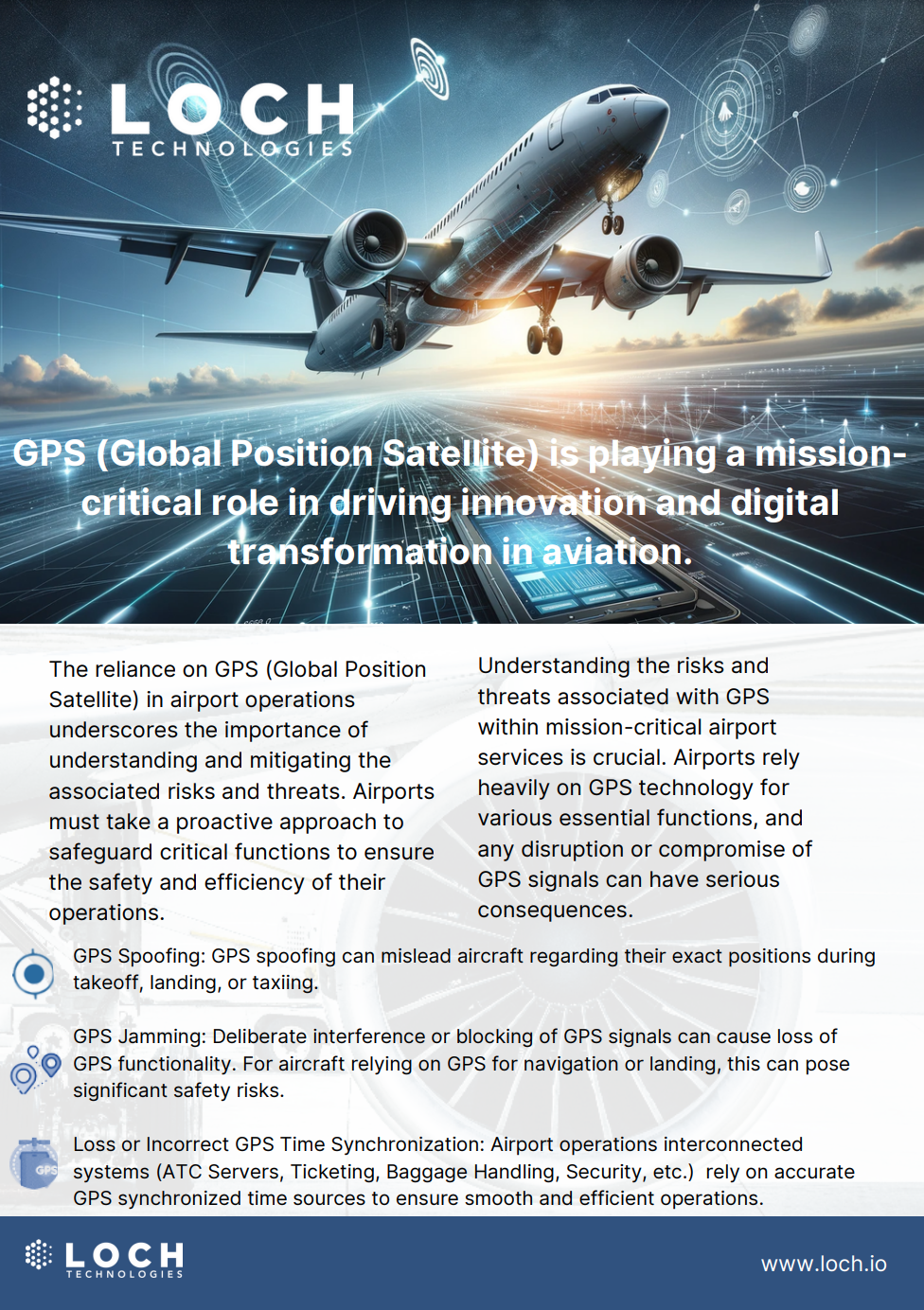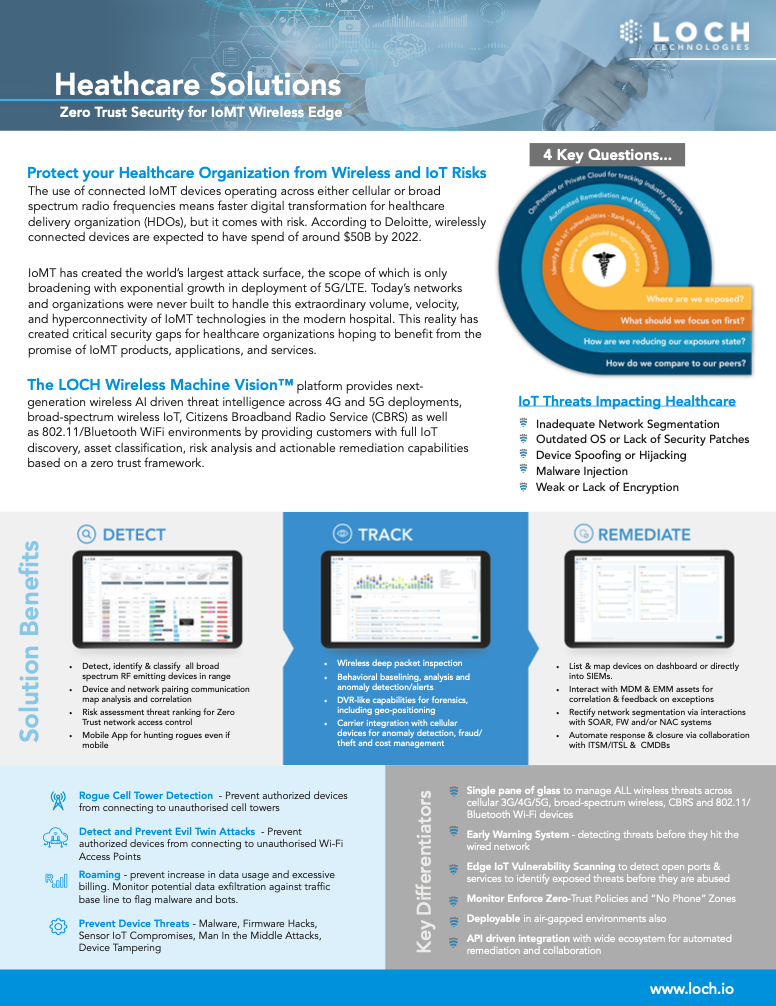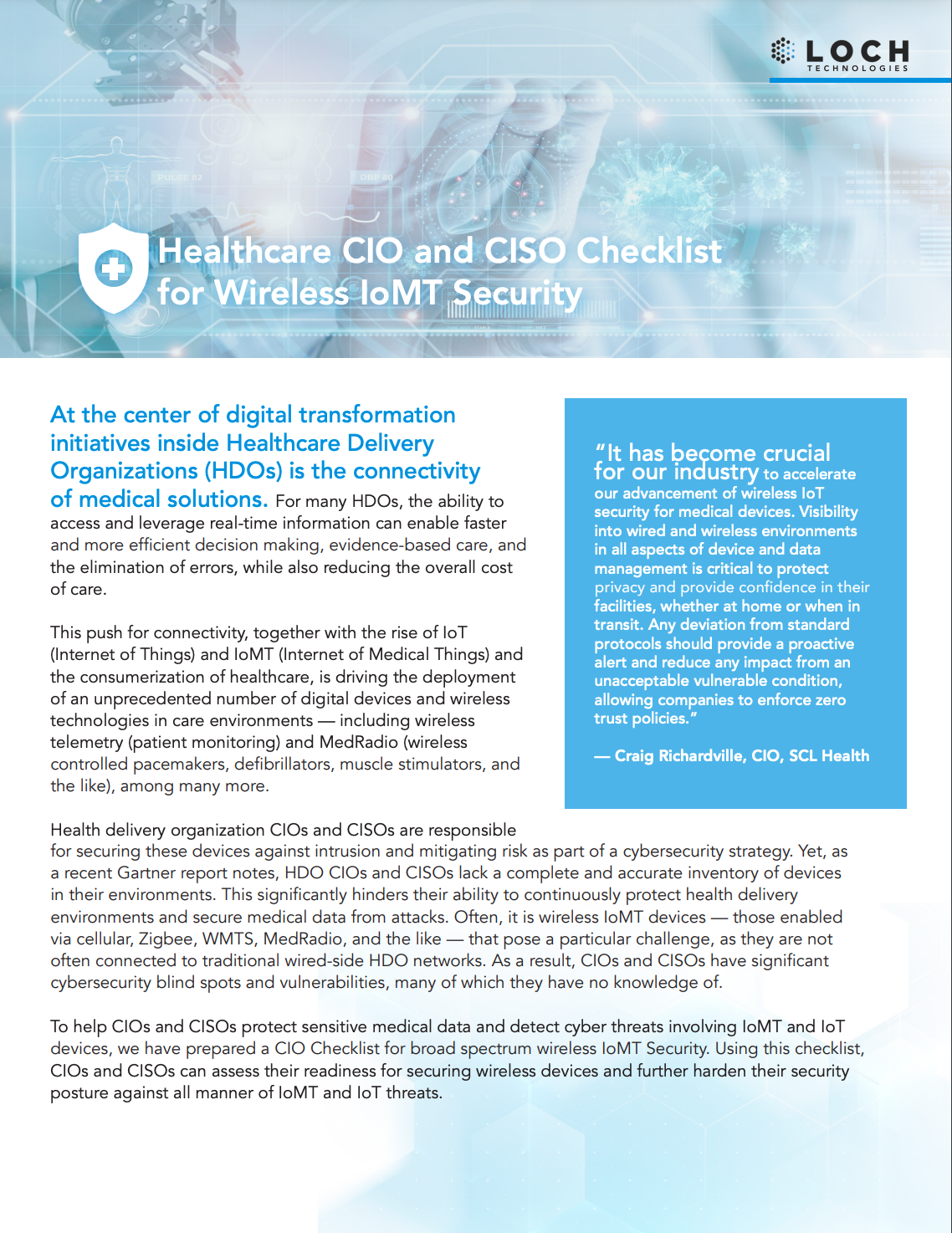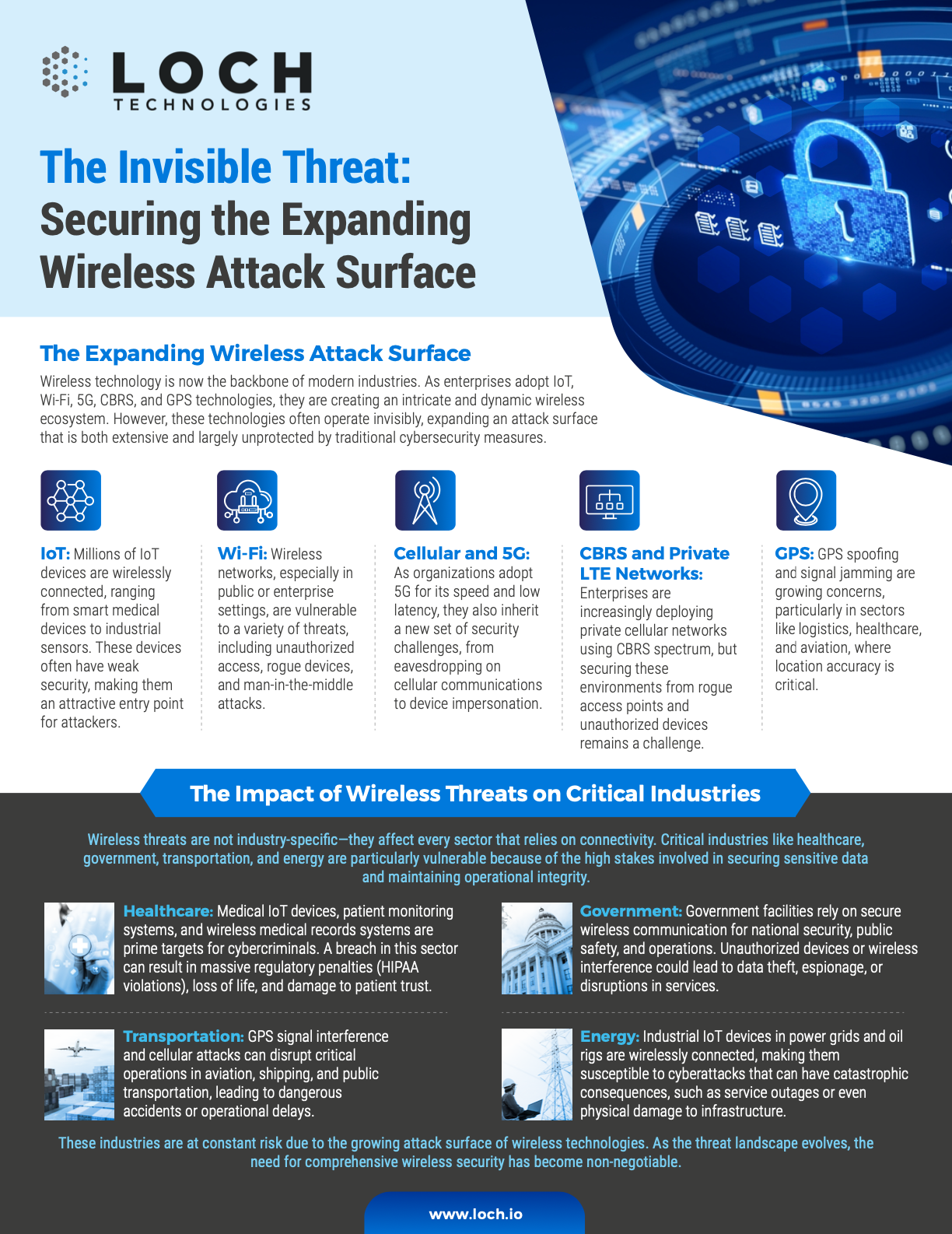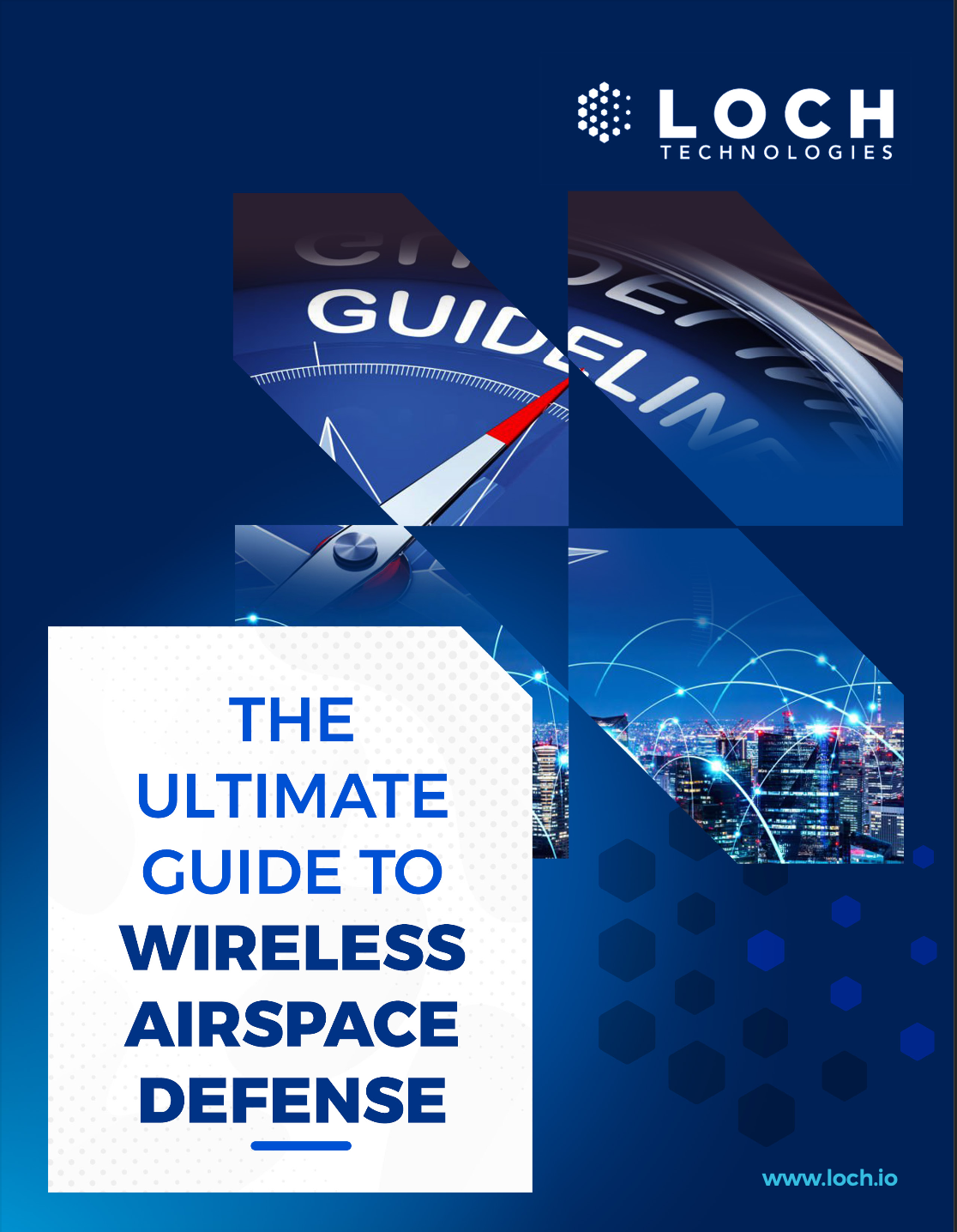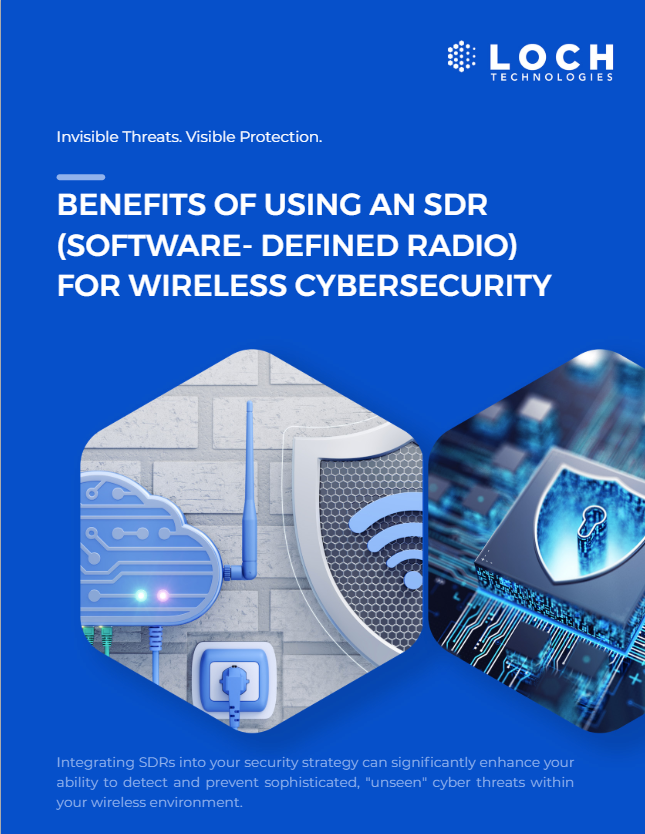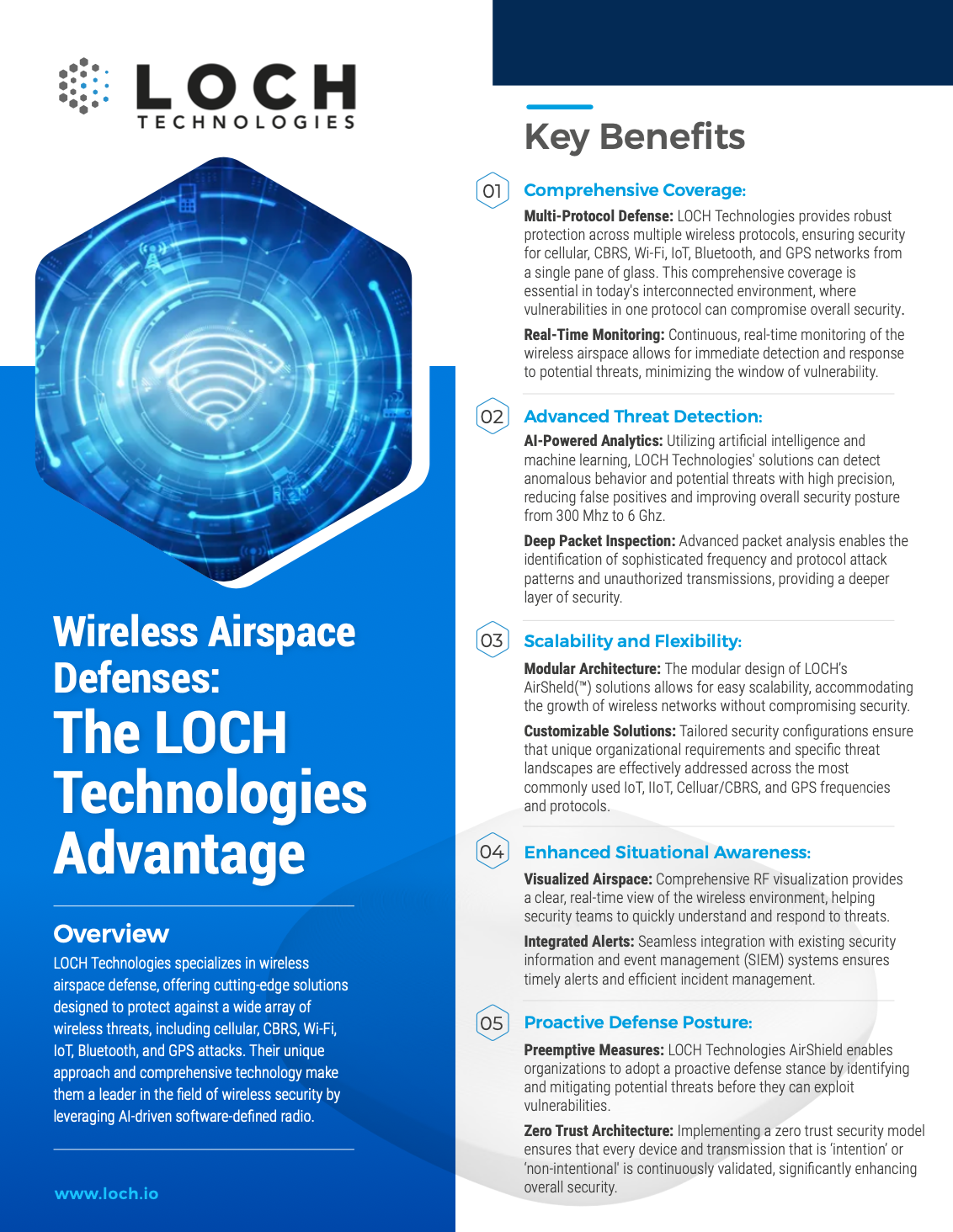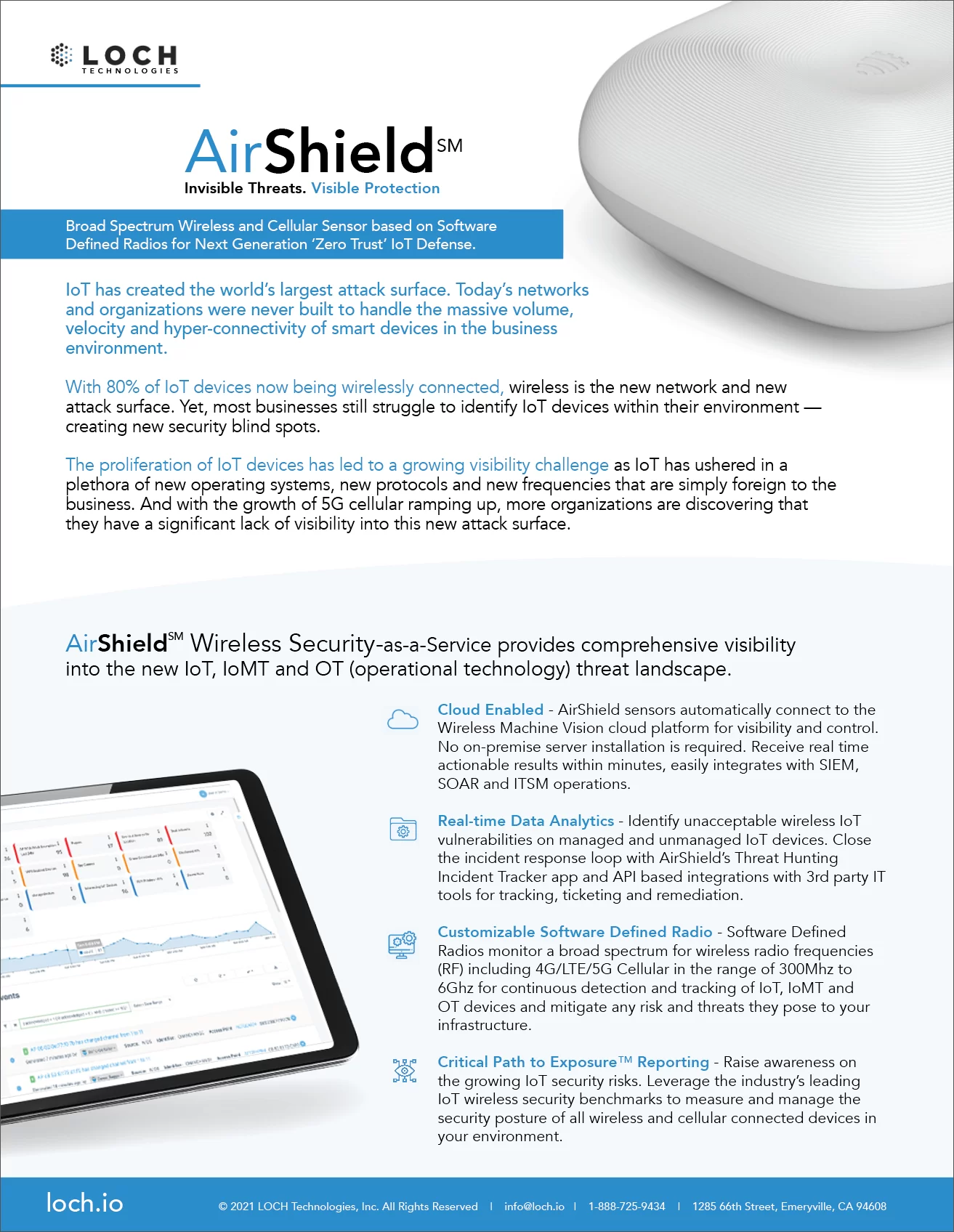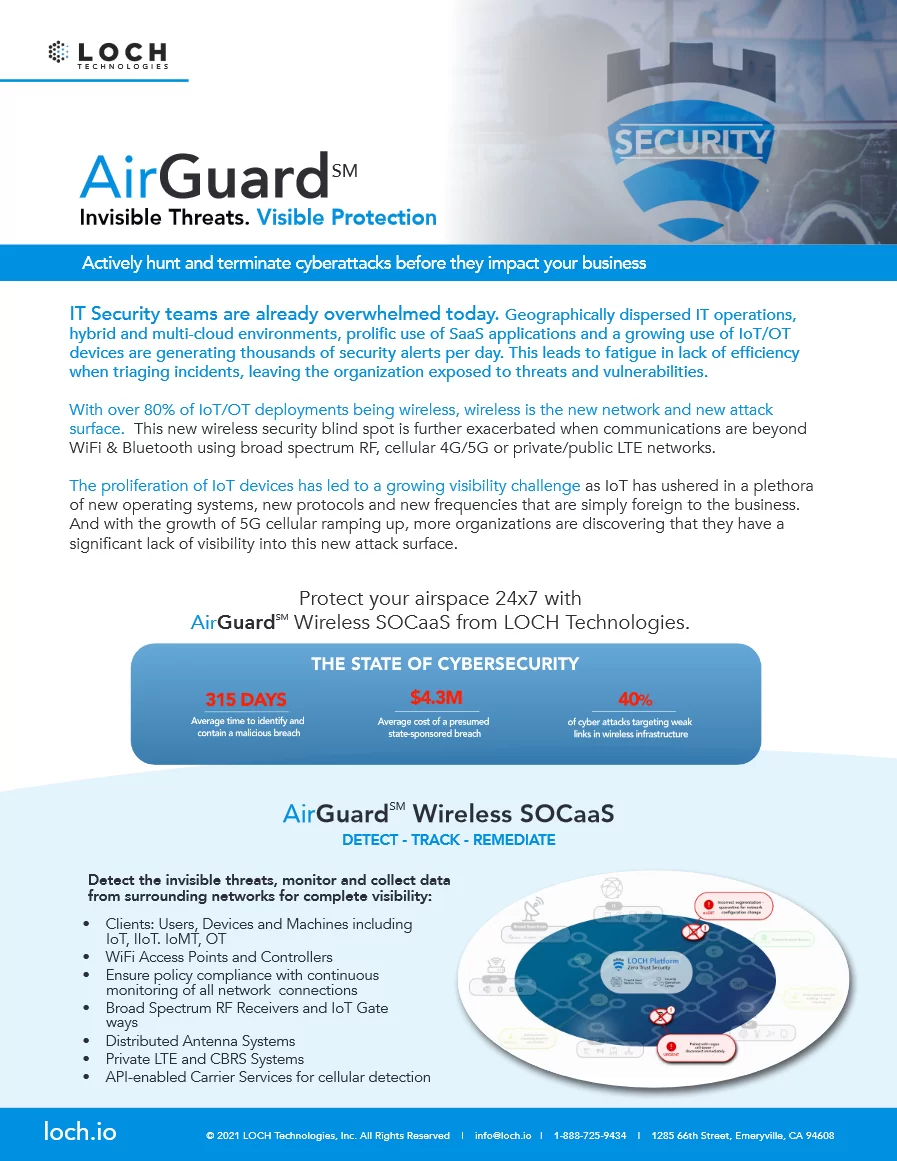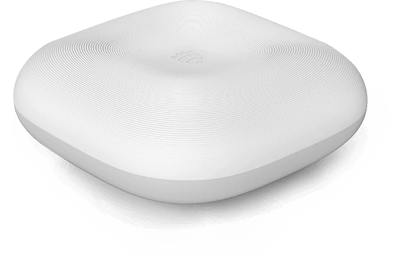
Healthcare Delivery Organizations (HDOs) are increasingly utilizing wireless technologies such as Wi-Fi, Cellular, IoMT (Internet of Medical Things), CBRS (Citizens Broadband Radio Service), and GPS to support mission-critical services, enhance patient care, and streamline operations.
While these technologies offer significant benefits, they also introduce a range of wireless risks and threats that can impact the safety, privacy, and operational efficiency of healthcare providers.
Wireless Risks and Threats in Healthcare (HDOs)
Interference and Jamming
Wi-Fi and Cellular Networks: Unintentional interference or deliberate jamming can disrupt Wi-Fi and cellular networks, causing communication breakdowns between medical devices, patient monitoring systems, and healthcare staff.
CBRS: As a shared spectrum, CBRS can be prone to interference from other users or malicious jamming, affecting critical communications and data exchange.
GPS: GPS jamming or spoofing can disrupt location-based services and logistics, impacting ambulance routing, equipment tracking, and mobile health services.
Unauthorized Access and Intrusions
Wi-Fi Networks: Unauthorized access to Wi-Fi networks can allow attackers to infiltrate hospital systems, access patient records, and manipulate medical data or devices.
IoMT Devices: Many IoMT devices have limited security features, making them vulnerable to unauthorized access, data breaches, or manipulation. This can lead to compromised patient safety and data integrity.
Cybersecurity Attacks
Man-in-the-Middle (MitM) Attacks: Attackers can intercept and manipulate communications between devices and healthcare systems, potentially leading to data theft, system disruptions, or unauthorized control of medical devices.
Ransomware and Malware: Wireless networks can serve as entry points for ransomware or malware attacks, which can lock down critical systems, disrupt patient care, and lead to data loss or corruption.
Insider Threats and Physical Attacks
Internal Sabotage or Misuse: Employees or contractors with access to wireless networks may intentionally or inadvertently misuse their access, leading to data leaks or operational disruptions.
Physical Attacks on Infrastructure: Physical attacks or sabotage on wireless infrastructure, such as Wi-Fi access points or cellular towers, can disrupt essential communication and medical services.
Environmental and Operational Challenges
Signal Degradation: Hospital environments with complex layouts and equipment can cause signal degradation, affecting the reliability of wireless communications and IoMT device performance.
Data Privacy and Compliance Risks
Patient Data Breaches: Wireless vulnerabilities can lead to breaches of sensitive patient data, violating privacy regulations (such as HIPAA in the U.S.) and exposing HDOs to legal and financial repercussions.

Join Us at the Security & Policing Home Office Event – Farnborough, UK, March 11th - 13th, 2025
Read More
Creating the Next Frontier in Wireless Technology: The Critical Need for Wireless Airspace Defense
Read More
The Silent Threat of Rogue Wi-Fi Networks on Navy Ships – How LOCH's AirShield Could Have Prevented a Security Breach
Read MoreThe Looming Threat:
How Wireless Hacking Could Disrupt Healthcare Operations
Operational Disruptions
Downtime of Critical Systems: Disruptions in wireless communications can cause downtime for critical systems, such as electronic health records (EHRs), telemedicine platforms, and patient monitoring systems, impacting patient care delivery.
Compromised Patient Safety
Malfunctioning Medical Devices: Attacks on IoMT devices can lead to malfunctioning medical equipment, incorrect patient data, and compromised patient safety, potentially resulting in harm or fatalities.
Financial Losses
Cost of Breaches and Downtime: Data breaches, ransomware attacks, and operational downtime can result in significant financial losses due to legal penalties, lost revenue, increased operating costs, and remediation expenses.
Reputational Damage
Non-compliance with cybersecurity regulations can result in fines and other penalties from regulatory bodies.
Regulatory Non-Compliance
Violation of Privacy Regulations: Data breaches and unauthorized access to patient information can result in non-compliance with regulations like HIPAA, leading to fines, legal actions, and reputational damage
How LOCH Wireless Airspace Defense Can Mitigate Risks
Here’s how LOCH can effectively mitigate these risks:
Continuous Monitoring and Real-Time Detection
Real-Time Threat Detection: LOCH’s solution continuously monitors the wireless airspace to detect unauthorized devices, rogue access points, and interference. This real-time detection helps identify and mitigate threats before they impact operations or patient care.
Advanced Threat Assessment and Prioritization
Automated Analysis and Prioritization: The system categorizes detected threats based on their potential impact, enabling a focused response to the most critical issues. This prioritization helps maintain operational continuity and protect patient safety.
Automated Alerts and Response Capabilities
Immediate Mitigation Actions: LOCH’s solution provides automated alerts and predefined response actions, such as quarantining compromised devices, blocking unauthorized access, or adjusting network configurations to mitigate risks and protect critical systems.
Integration with Existing Healthcare Security Systems
Enhanced Situational Awareness
Visibility into All Wireless Technologies: LOCH’s solution provides visibility into all wireless activities, including Wi-Fi, cellular, IoMT, CBRS, and GPS, enhancing situational awareness and enabling proactive threat management.
Adaptive Defense Mechanisms
Dynamic Security Adjustments: The solution uses adaptive algorithms to adjust security measures based on detected threats and environmental conditions, ensuring continuous protection even in dynamic and high-risk healthcare settings.
Compliance Support and Reporting
Regulatory Compliance Assurance: LOCH’s Wireless Airspace Defense provides detailed logs and reports of all wireless activities and security incidents, supporting regulatory compliance and facilitating audits to meet standards like HIPAA.
- - Detect, identify and classify all broad spectrum RF emitting devices in range
- - Device and network pairing communication map analysis and correlation
- - Risk assessment threat ranking for Zero Trust network access control
- - Mobile App for hunting rogues even if mobile
- - Wireless deep packet inspection
- - Behavioral baselining, analysis and anomaly detection/alerts
- - DVR-like capabilities for forensics, including geo-positioning
- - Carrier integration with cell. devices for anomaly detection, fraud/theft and cost management
- - List and map devices on dashboard or into SIEMs.
- - Interact with MDM and EMM assets for correlation and feedback on exceptions
- - Rectify network segmentation via interactions with SOAR, FW and/or NAC systems
- - Automate response and closure via collaboration with ITSM/ITSL and CMDBs




